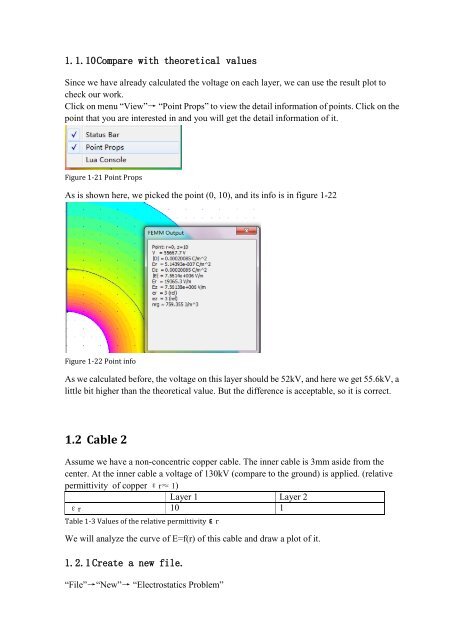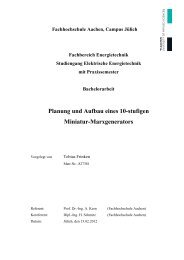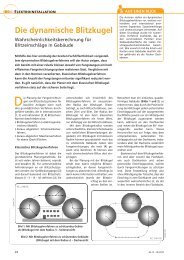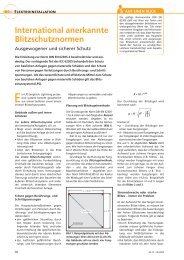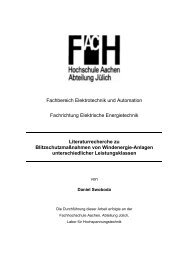Simulation of electric and magnetic fields using FEMM - FH Aachen ...
Simulation of electric and magnetic fields using FEMM - FH Aachen ...
Simulation of electric and magnetic fields using FEMM - FH Aachen ...
You also want an ePaper? Increase the reach of your titles
YUMPU automatically turns print PDFs into web optimized ePapers that Google loves.
1.1.10 Compare with theoretical values<br />
Since we have already calculated the voltage on each layer, we can use the result plot to<br />
check our work.<br />
Click on menu “View”→ “Point Props” to view the detail information <strong>of</strong> points. Click on the<br />
point that you are interested in <strong>and</strong> you will get the detail information <strong>of</strong> it.<br />
Figure 1-21 Point Props<br />
As is shown here, we picked the point (0, 10), <strong>and</strong> its info is in figure 1-22<br />
Figure 1-22 Point info<br />
As we calculated before, the voltage on this layer should be 52kV, <strong>and</strong> here we get 55.6kV, a<br />
little bit higher than the theoretical value. But the difference is acceptable, so it is correct.<br />
1.2 Cable 2<br />
Assume we have a non-concentric copper cable. The inner cable is 3mm aside from the<br />
center. At the inner cable a voltage <strong>of</strong> 130kV (compare to the ground) is applied. (relative<br />
permittivity <strong>of</strong> copper εr≈ 1)<br />
Layer 1 Layer 2<br />
εr 10 1<br />
Table 1-3 Values <strong>of</strong> the relative permittivityεr<br />
We will analyze the curve <strong>of</strong> E=f(r) <strong>of</strong> this cable <strong>and</strong> draw a plot <strong>of</strong> it.<br />
1.2.1 Create a new file.<br />
“File”→“New”→ “Electrostatics Problem”


